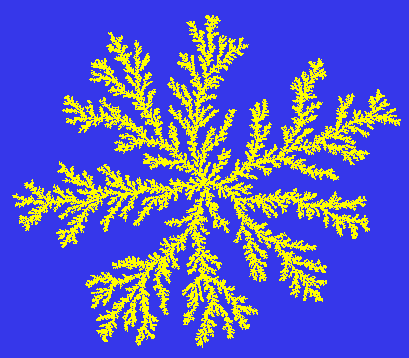
The laws of physics appear simple when expressed through the language of mathematics. Take for example Isaac Newton's second law. If a net force F acts on a body, it accelerates. The mass of the body m times its acceleration a equals the net force, F = ma. This law is beautiful in its simplicity. This law is universal. It does not depend on the shape of the body, the source of the force, or whether you apply it to apples on Earth or to planets in the Solar system or elsewhere in our universe.
If the laws of physics are simple, how come Nature isn't? When looking around, you find Nature is complex. The complexity manifests itself as emergent properties such as simple patterns, hierarchical structures, fractal structures or other scale free behaviour. The overall objective of the science of complexity is to address why Nature is complex, not simple, as the laws of physics seem to imply.
The science of complexity is highly interdisciplinary. It deals with dynamical systems composed of many interacting agents, for example organisms in biology (ecology), grains in granular media, networks of agents in economics etc. Methods from statistical mechanics are employed to gain insight into the behaviour of such systems. The main question addressed is how complexity, such as scalefree behaviour and organisation, can emerge from simple underlying dynamical rules associated with the individual agent?
One paradigm that has been proposed is self-organised criticality (SOC). The concept of SOC has been applied in fields spanning statistical mechanics, condensed matter theory, geophysics, economy and biology. At present, we study models of granular media (sand piles and rice piles) and percolation computationally and theoretically, earthquake, and evolution computationally, and analyse real data of earthquakes, rain and solar flares.
Below follows a short description of each main subject.
Keywords: Complexity, nonequilibrium systems, emergent properties,scalefree behaviour, fractals, self-organized criticality, granular systems, rice piles, stick-slip behaviour, spring-block models, relaxational processes, rain, and evolution.
See also the Web page of Prof. Henrik J. Jensen, Department of Mathematics, Imperial College London.
